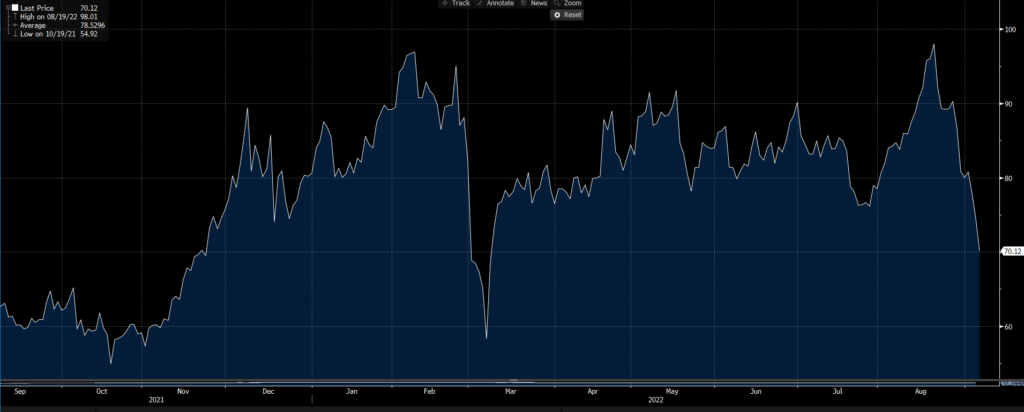
Recent EU Market Moves Creates Historic Buying Opportunity
<1 Min. Read Time
As you may have seen, the global carbon allowance index is 6.5% lower today and 5% yesterday. These moves are from the pricing in of the worst-case scenarios in the market given the energy crisis in Europe. The concept of raising $20bn in additional allowance sales, which we have discussed at length in previous posts, is the main driver as it picks up support. Volatility is high at the moment, though this creates a reset to build on once the dust settles.
The pressure on these markets today will create a coiled spring for when normal market operations resume, leading to a historic opportunity to enter.
With the EU market, carbon prices are down roughly 10% so far today, following losses over the past week. Currently, EUAs are trading 69.53 EUR. EU lawmakers are resuming talks on all sorts of things: political discussions on the Fit for 55 reforms are kicking off in October, but the RePowerEU package (which includes the plan to sell €20 B worth of EUAs) is probably going to be fast-tracked. Opposition to the EUA sales is evaporating, and the market is starting to price these sales in now. The EU is also planning to intervene in the power and gas markets – there has even been talk of suspending the power futures market (!), which could have a knock-on effect on carbon somehow. All this leads to a likely historic buying opportunity in the coming weeks.
UKAs are holding up better, but still under some pressure. The UKA premium over EUAs has blown out to €30 or so because the UK market is structurally tighter, there is less speculative activity, and it’s not being talked about in the same way as the EU ETS. However, some analysts see increased intervention in the UK as they will likely follow suit after the EU implements new policy.
I should add that EUAs were at all-time highs just a couple of weeks ago, on August 19th. This is a volatile market; let’s keep the perspective. We have seen this before after the Russian invasion of Ukraine brought on a sharp decline earlier this year but then began rebounding back in March. Looking beyond the current market moves, the long-term outlook remains bullish, supported by higher power sector emissions and the ETS tightening reforms kicking in. Moreover, carbon markets remain as one of the leading long-term tools for combating climate change.











